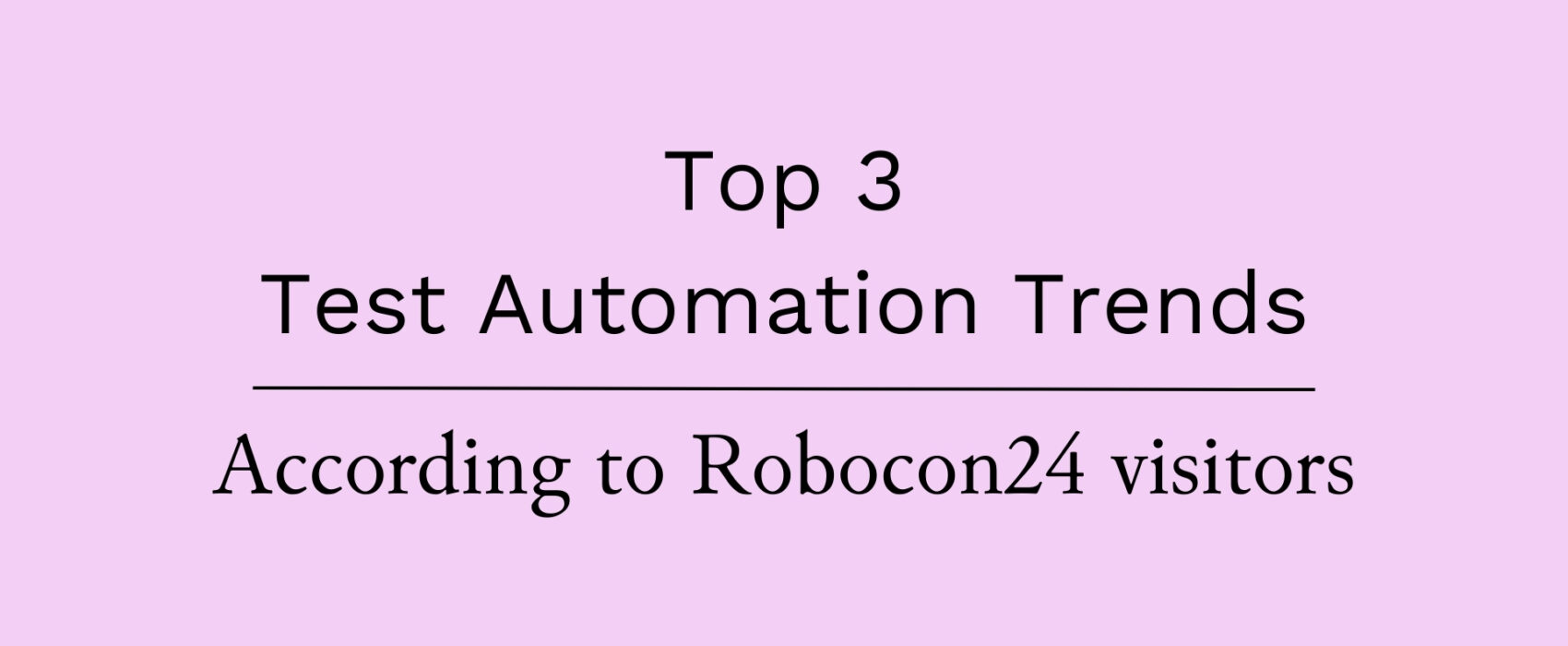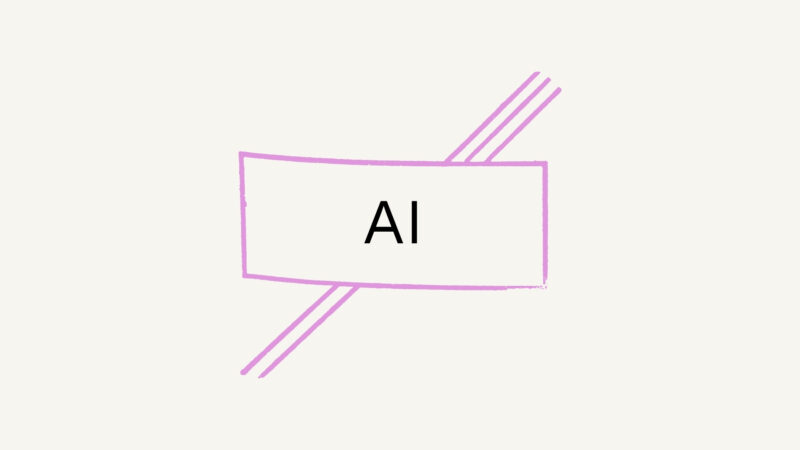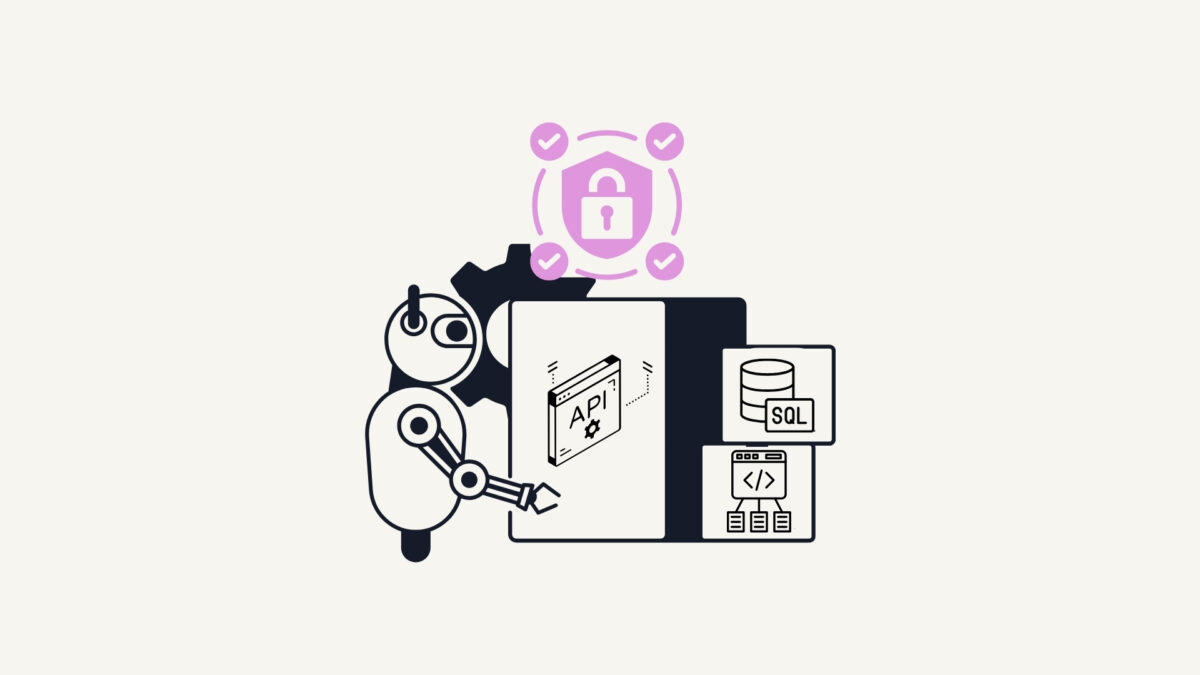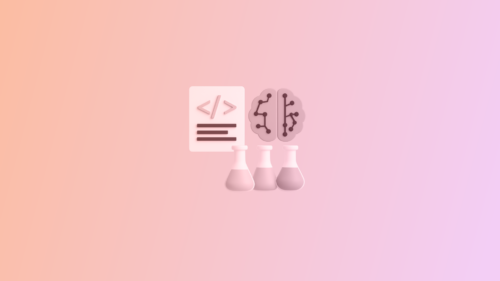Top 3 Test Automation trends, according to 110 field professionals at Robocon 2024 conference
19.02.2024

At Robocon 2024, the most prestigious test automation event in Finland or maybe in the world, VALA conducted a survey to identify the top trends shaping the future of software test automation. There were 110 respondents who all can be presumed to know their fair share about test automation.
There were two questions in which the respondents were asked to choose three most important answer choices from a list of 7 predetermined choices. The first question was to choose three most important test automation trends for 2024, and the second one was the same but for years 2025 to 2030.
This article shows the results and discusses the top three test automation trends for both year 2024 and years 2025-2030.
The text is a bit of a monster so here’s a menu with jump-to-links:
Top 3 test automation trends for 2024
2. Containerized test automation
3. Test automation of Software Security
Test automation trends 2024 – Conclusion
Top 3 test automation trends for 2025 to 2030
1. Self healing test automation
3. Data analytics and use of Big Data in Test Automation
Test automation trends 2025-2030 – Conclusion
Executive Summary
The test automation trends for 2024, voted by test automation professionals, showcase major advancements in our field. AI-driven automation, containerization, and software security testing are seen as the most influential trends.
AI-driven automation uses machine learning to improve test coverage and accuracy which enables more agile testing workflows. Containerized automation ensures consistency and scalability across different development stages, which promotes efficiency and rapid iteration. Last but not least, Software security testing integrates into development pipelines and proactively identifies and mitigates vulnerabilities early on.
That was for 2024. When we head to 2025-2030, the progress of test automation trends continues with Self-healing automation, Data analytics, and Autonomous testing.
Self-healing automation enables automated systems to detect and resolve issues autonomously, minimizing manual intervention while enhancing efficiency and reliability. Data analytics and big data utilization offer predictive insights, enabling testers to improve testing processes effectively and continuously. Autonomous testing teams up with test automation to improve workflows to reduce time and effort while improving reliability and repeatability.
These trends show us a shift towards simply better and more efficient test automation and software quality, laying the groundwork for future advancements in the field.
Top 3 test automation trends for 2024
1. AI driven test automation (top 3 choice for 71% of the respondents; 78/110)
What does AI driven test automation mean and how can it be used to make software testing better and more efficient?

Traditional test automation relies heavily on predefined test scripts and rules, which can be limited in their ability to handle complex scenarios or adapt to changes in the software. AI-driven automation, on the other hand, leverages machine learning and other AI technologies to analyze data, identify patterns, and make intelligent decisions.
One key benefit of AI-driven test automation is its ability to improve test coverage and accuracy. By analyzing large volumes of data from previous test runs, AI algorithms can identify areas of the software that are most prone to defects or that require more thorough testing. This enables testers to prioritize their efforts and focus on the most critical areas.
AI-driven automation can also dynamically generate and optimize test cases based on evolving requirements and usage patterns. This way testers can make sure that the testing efforts remain aligned with the changing needs of the software.
AI algorithms can automatically generate test scripts, execute tests across various platforms and environments, and analyze test results to identify anomalies or unexpected behavior. This frees up time to focus on more creative and high-value tasks.
All in all it’s somewhat certain that AI will drastically change test automation and software testing. But how much of this will happen in 2024? According to field professionals, quite much already.
2. Containerized test automation (top 3 choice for 55% of the respondents 60/110)
What does Containerized test automation mean and how can it be used to make test automation better and more efficient?
Containerized test automation refers to the practice of encapsulating testing environments, tools, and dependencies within lightweight, portable containers. Containers provide a consistent and isolated environment for running tests, regardless of the underlying infrastructure or operating system.
This approach allows testers to package their testing setups into self-contained units that can be easily deployed and scaled across different environments, such as development workstations, testing servers, or cloud platforms.
By containerizing test automation, one can achieve greater efficiency and flexibility in testing processes. Containers enable testers to quickly spin up and tear down testing environments on-demand, reducing the time and effort required for environment setup and maintenance. This agility allows rapid iteration on test cases, running tests in parallel, and scaling testing infrastructure.
On top of all this, since containers encapsulate all dependencies and configurations needed for testing, there is less risk of environment inconsistencies or compatibility issues between different testing setups. This ensures that tests can be reliably executed across various development and deployment stages.
Overall, containerized test automation improves efficiency, and enhances the reliability and reproducibility of testing processes. No wonder it is ranked as the second most important test automation trend for 2024.
3. Test automation of Software Security (top 3 choice for 46% of the respondents 51/110)
What does Test automation of Software Security mean and how can it be used to make software testing better and more efficient?

Test automation of software security involves the use of automated testing techniques and tools to identify and mitigate security vulnerabilities in software applications.
This approach aims to proactively identify potential security weaknesses, such as code vulnerabilities, configuration errors, or authentication issues, before they can be exploited by malicious actors.
Automated security testing tools can scan codebases, APIs, and infrastructure components for common security flaws, like SQL injection, cross-site scripting (XSS), and insecure authentication mechanisms, and provide actionable insights for remediation.
These tools can also analyze code and infrastructure configurations at scale. By doing this, they can identify security vulnerabilities across large and complex software systems more quickly and comprehensively than manual testing methods.
Finally, test automation of software security helps integrate security testing into the continuous integration/continuous deployment (CI/CD) pipelines. By automating security tests as part of the build and deployment process, it’s possible to run security checks at every stage of the software development lifecycle, from development and testing to staging and production environments.
All these reasons are more than compelling for making this one of the most important test automation trends for 2024, as the Robocon visitors thought too.
Test automation trends 2024 – Conclusion
In conclusion, the trends identified at the Robocon 2024 survey mean real advancements in test automation, each offering something unique to improve software testing in general.
AI-driven test automation brings autonomy and adaptability by leveraging machine learning to improve test coverage, accuracy, and efficiency.
Containerized test automation simplifies testing environments, which helps improve consistency and reproducibility across various stages of development. This also enables rapid iteration and scalability.
Meanwhile, test automation of software security addresses the critical need for proactive security measures to identify and mitigate vulnerabilities early on.
Together, these trends show a shift towards more efficient, reliable, and secure software testing practices, setting the stage for continued advancements in the field.
Top 3 test automation trends for 2025 to 2030
It can be somewhat simple to forecast trends for the coming year as it’s, well, not so far in the future. But forecasting the landscape in five years to come is a whole different ball game, especially when it comes to the software industry where things change super quickly.
That’s why we wanted to survey this longer term scenario too. Not so much to get “correct” answers but rather to get some interesting data to ponder about now, and to follow up in the following years, to see how correct we were in 2024.
Let’s get to it, here are the three most important trends for test automation in 2025-2030, according to 110 Robocon 2024 visitors.
1. Self healing test automation (top 3 choice for 62% of the respondents 68/110)
What does Self healing test automation mean and how can it be used to make software testing better and more efficient?
Self-healing test automation refers to the capability of automated testing systems to detect and address failures or discrepancies encountered during test execution autonomously.
In essence, these systems are designed to proactively identify issues and implement corrective actions without manual intervention. This reduces the need for human involvement in test maintenance and troubleshooting quite a lot.
Self-healing test automation can change test scripts and settings when things in the software or its environment change. For example, if a test fails because of a small design change or a network problem, the system can fix the test script or try the test in another setup.
Overall, self-healing test automation plays a major role in improving testing processes, reducing manual work, making it a deserved pole position contestant in our survey!
2. Autonomous Testing (top 3 choice for 56% of the respondents 62/110)
What does Autonomous testing mean and how can it be used to make software testing better and more efficient?
Autonomous testing and test automation represent two intertwined concepts aimed at enhancing software testing processes. Autonomous testing means the ability of testing systems to operate independently, making decisions and executing test cases without human intervention. This includes not only the execution of tests but also test case generation, environment setup, and result analysis. On the other hand, test automation uses software tools and scripts to automate repetitive and manual testing tasks, such as regression testing, functional testing, and performance testing. Together, these two work in unison to improve the efficiency and effectiveness of software testing.
Autonomous testing and test automation reduce testing time and effort. Automated test scripts execute tests faster and more consistently, enabling faster feedback cycles and continuous testing.
They improve testing reliability and repeatability by eliminating human errors and variability. Automated tests provide more reliable results and better coverage across various scenarios.
In conclusion, autonomous testing and test automation improve testing efficiency, reliability, and quality. Hence this rightfully deserves its second place in our survey too.
3. Data analytics and use of Big Data in Test Automation (top 3 choice for 55% of the respondents 61/110)
What does Data analytics and use of Big Data in Test automation mean, and how can these be used to make software testing better and more efficient?
Using data analytics and big data in test automation involves taking advantage of large volumes of test data and applying analytical techniques to optimize testing strategies and improve efficiency.
Test automation generates vast amounts of data, including results, performance metrics, and usage patterns. These can then be analyzed to identify trends, patterns, and anomalies.
Data analytics and big data enable predictive analytics to anticipate and prevent potential issues. Analyzing historical test data, such as defect rates and test coverage, helps identify areas prone to defects or ones needing additional testing.
Overall, leveraging data analytics and big data in test automation enables testers to make informed decisions and improve testing efficiency and effectiveness.
Test automation trends 2025-2030 – Conclusion
The trends we have identified through our survey, provide valuable insights into the future of test automation from 2025 to 2030.
Self-healing test automation enables automated testing systems to detect and resolve issues autonomously, which improves efficiency and reliability while minimizing manual intervention.
Autonomous testing and test automation work together to make testing workflows more efficient; This reduces time and effort and enhances reliability and repeatability.
Data analytics and the utilization of big data in test automation offer predictive insights, which enables prioritizing testing efforts and optimizing testing processes.
Together, these trends show us a clear path towards more efficient and reliable testing practices, and thus better software quality.



